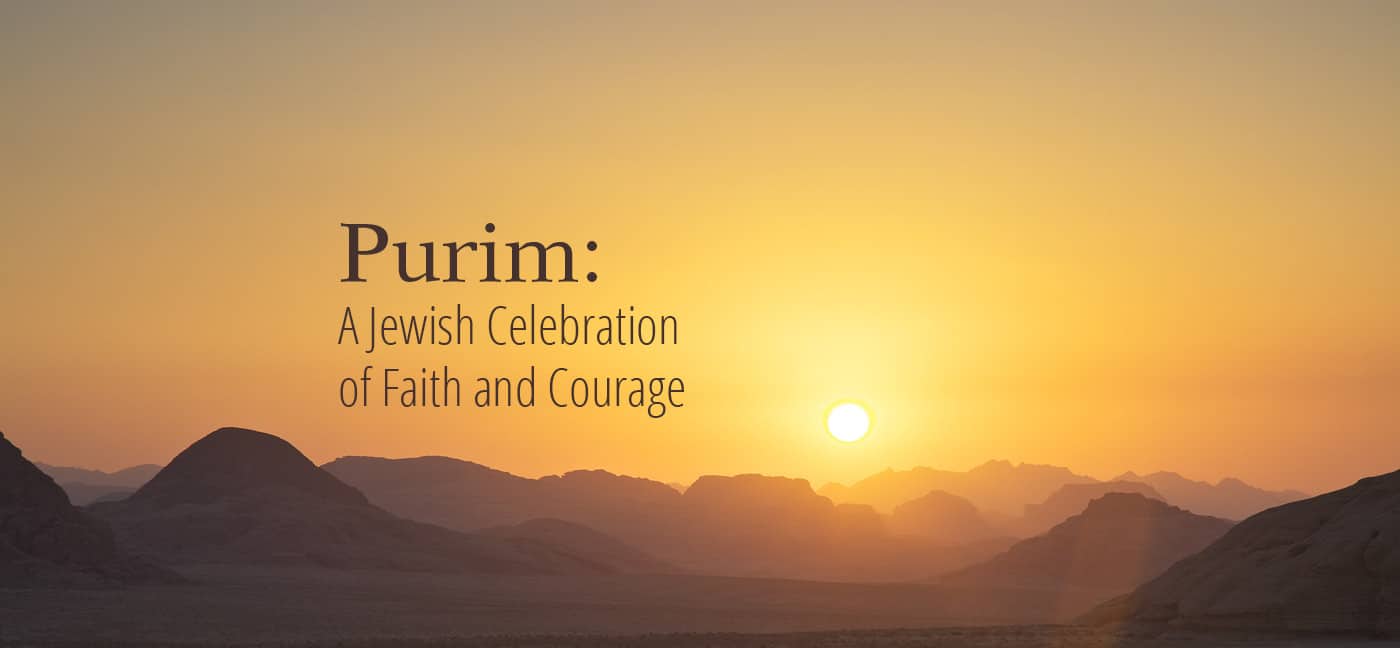Purim: A Jewish Celebration of Faith and Courage

An Enduring Story of Faith
Nearly 2,500 years ago, in the middle of two million square miles of the Persian Empire, in the city of Shushan, there lived an orphan, a beautiful Jewish girl named Hadassah, though she is better known by her Persian name, Esther.
Esther’s story of faith and courage happened thousands of years ago, but it lives on today because people are still inspired by her faith and courage.
As the Bible story goes, Ahasuerus, the king of Persia became angry with his wife Vashti for disobedience. He began looking for a new wife from the young virgins of his empire. Esther was brought before him and he liked what he saw. Soon she was chosen to replace Vashti as queen.
At the time, Esther had been raised by her cousin Mordecai, and even after she became queen, he was never far away. He counseled her as often as he could and in the beginning advised her to hide her Jewish identity.
King Ahasuerus appointed an evil man named Haman to the highest position at court and decreed that everyone should bow down to him. Whenever Esther’s cousin Mordecai was in Haman’s presence he refused to show him this respect. Haman resented Mordecai and abused his position of power by sending forth a decree to exterminate the Jews.
Mordecai went to Esther and pleaded with her to approach the king to save their people. Doing so would put her life at risk, but Mordecai believed that God had made her queen so she could save her people. Esther decided that she would go to the king for help, but before doing so, she fasted for three days and told Mordecai to ask their people to do the same.
When the time was right, she did risk her life to approach the king and shared Haman’s evil plans to annihilate her people. The king flew into a rage and sent Haman to be hung on the very gallows the vizier had built to hang Mordecai.
Esther’s Legacy of Faith Lives On
Every year, Jewish people celebrate Esther’s story of faith and courage on a holiday known as Purim. The word “Purim” means “lots” in ancient Persian, because it’s believed that Haman cast lots to choose which day he would massacre the Jews.
Today the holiday is celebrated by exchanging gifts of food, donating to the poor, eating a celebratory meal, public recitations of the entire scroll of Esther, drinking wine, and by wearing masks and costumes.
This annual celebration is an example of the power of a single story of faith to affect millions of people and live on for generations.
Without Action, Faith Is Just a Word
Most of us won’t be asked to risk our lives to save a nation, but our simple acts of faith can inspire and empower others. Even if your story isn’t passed down for 2,500 years, it can be impactful for your loved ones and your posterity—especially if you write it down.
It takes humility and optimism to believe that everything will work out. But more often, like in Esther’s story, it takes action to ensure that it does. Our faith may have the power to move mountains, but if we don’t act on it, we’ll never know what’s possible.
Stories of faith can be found in all cultures, religions, and places. Seeking them out and passing them on promotes courage in the face of adversity, and empowers the human spirit.
Linda Clyde is a believer—because she’s convinced it’s way better than being a doubter. One of her favorite things to do is spread optimism and hope with the power of words.
![]()



